![]()
The Words of the Yong Family
|
|
The Words of the Yong Family |
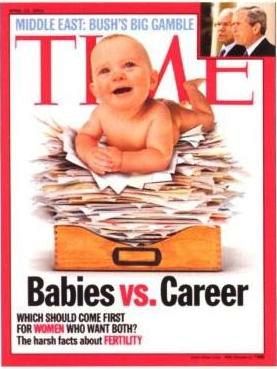
What is the purpose of the love
between man and woman? Where does their desiring love bear fruit?
Love surely wants a certain result that can be connected to the
whole; that is a child. A couple does not want to finish their love
within themselves. The accomplishment of the purpose of love is a
child. So unless the purpose of love is accomplished, their ultimate
desire is not fulfilled no matter how much they love each other. A
child is the universal representative of parents.
-- True
Father, Blessing and Ideal Family
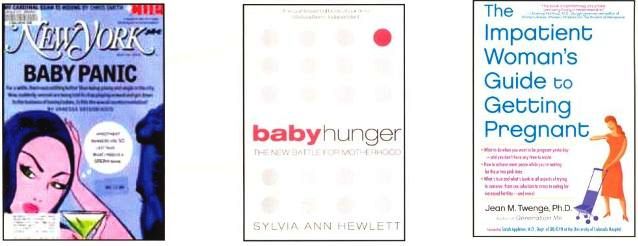
Baby
Hunger caused a furor of pessimism about older women having babies.
The magazines Time and New York featured sensationalist covers as a
result. The Impatient Woman's Guide to Getting Pregnant counters that
pessimism but garnered much less publicity.
Question: Could you tell about how your regional president prays for barren couples?
Dr. Yong has a heart and a passion to help blessed couples. Based on his understanding of the Principle, couples must have children to experience the heart of being a parent, being a father, being a mother. He will invite them specifically and offer prayers for them, public prayers for these couples.
At the same time, lie will usually ask the couples to do some kind of condition or make a sacrifice or participate in some public events. In that way, it is not just a one-sided effort; it is cooperative. He has prayed for a number of childless couples in many countries in Asia, and even beyond Asia -- he has developed a reputation among childless couples. They talk to each other, barren couples that want to have children, so by word of mouth even couples outside of Asia have contacted him.
The stories that we sent you were only from the Asia region.
It is his heart and passion to help couples have children, and Father has done the same thing. Even for our couple, we were ten years unable to have children and when met True Parents one time on Jeju Island. The first question Father asked was who doesn't have children? He suddenly focused on that. He asked, what can we do? We can give you oriental medicine and pray for you, and just believe it.
In that way, it becomes a public issue. You are no longer just struggling with it alone. Some support system is there.
A number of these couples have conceived children, and they themselves understand clearly that the connection, or the catalyst, for that was this prayer and Jeong Seong condition combined. That is basically what he has been doing.
Question: What do you mean by "public prayers"?
Well, it means that it is not in private. I do not know if he does prays for couples in private. He may do that. Everything I have seen is in public; the private, I don't see.
Question: Does he pray for them in front of other members?
Yes. He will take an occasion, if it is an appropriate occasion, and he will talk about the situation. He will even talk personally with that person in front of other people and then later pray. "I want to pray for you," he tells them. That prayer will include, maybe, the laying on of hands or something like that or it might be a prayer for the couple together. I have not experienced it personally myself, so I don't know, but I have seen him, in the case of the Philippines, line up couples that were barren. He had asked them to come to a specific occasion. He asked the couples to all line up. There were seven or eight onstage. They went onstage and one by one he prayed for those couples. I am sure there is counseling support to that as well.
I know he has also followed through. For couples that do not conceive through this, he has even arranged adoptions. He does not leave them if it does not happen.... It is not magic.
It is not predestined. We know that predestination absolutely does not work, but at the same time, some couples do conceive and the second option is that he can arranges adoptions or "gift children," as we refer to them.
Question: I've seen a few photos of him praying with his wife. Does he usually pray for them together?
If she is there, yes, but frequently their couple is separated, so he has done it on his own often.
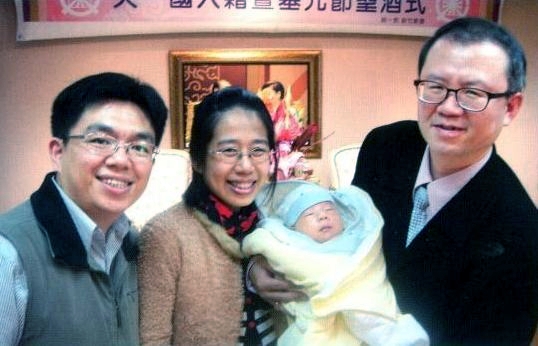
We started family but no pregnancy occurred for about six years (2006 -- 2012). We tried a Western medical examination and a Chinese medical examination. My husband's parents even took us to Note Raw Goddess Temple to receiver prayers to get a son.
After hearing a testimony during Hoon Dok Hae from Dr. Yong, I started reading Divine Principle and also served as the leader of a prayer team in the church and was enthusiastic about doing church service.
In March 2012, Dr. Yong came to Taiwan to share True Parents' important guidance. After the meeting Dr. Yong, guided those couples that have no children after a long time. He wanted to know each couple's condition. Then Dr. Yong said he would pray for us for forty days. Hearing this, I was so moved and appreciated Dr. Yong's heart. Dr. Yong said a few of the families would experience pregnancy within six months. I thought it would be other families that work harder than us. In May 2012, we attended Special Grace in Chung Pyung. I was certain that I was pregnant on May 19. The probable time of conception would have been in April, one month after Dr. Yong had prayed for us. Our son was born on January 15 2013. We always feel as if it is a dream.
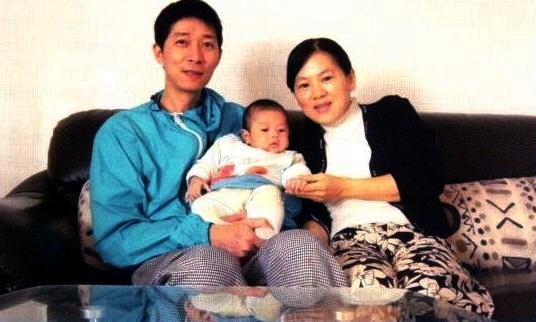
Mrs. Hui Ti Yang had difficulty conceiving a child, but she has many spiritual children. She had a special experience when Dr. Yong prayed over her after she shared her testimony, in December 2011, of having read the three-hour Divine Principle lecture book a hundred times. She saw True Father's spiritual body come into Dr. Yong's body. She now has a ten-month-old baby. Dr. Yong told her that her child would be a great man like Jacob.
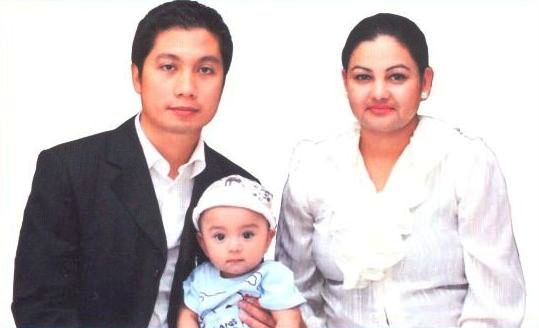
This is a story about how God's grace works in an incredible way. I am from the Philippines. My wife is Apsaralal, from Nepal. We are both fulltime members since joining the movement in 2000. We were matched and blessed in August 2004 in Korea. We started our family in 2008 in the Philippines at age twenty-eight. At that time, we were both working as full- time staff in UM-Philippines Headquarters. For a year after starting our family, we tried to conceive our first baby in a natural way, but there was no result. Therefore, we both went to a gynecologist. My wife took medication for a year for a hormonal imbalance. Nevertheless, again no result came. My wife was very concerned about this situation, because her age was approaching thirty.
Our couple planned a visit to our family in Nepal. We flew to Kathmandu in September 2010. While on the visit, my wife and I met our Nepalese national leader. We decided to work for God's providence in Nepal from January 2011, after obtaining permission from the Philippines.
In the beginning of January 2011, our Regional President Chung Shik Yong came to Nepal to help prepare for the Little Angels' visit to Nepal in February. During Hoon Dok Hae, Dr. Yong met my wife and I and learned of our situation. He said that he would pray over my wife and I to help us conceive a baby. He also said that we had to set a sincere condition.
My wife and I then focused on our respective missions related to the historic visit of the Little Angels to Nepal. The Little Angels performed on February 23. The concert hall was full and many important people were in the audience.
Based on that victorious national condition, Asia Regional President Yong and his wife, and Ek Nath Dhakal, the Nepalese national leader and his wife prayed over my wife and me on the morning of February 24 after Hoon Dok Hae. Dr. Yong told us that my wife would conceive a baby within six months. We believed that his statement had come from God, so we are happy and excited.
Four months passed and we both became anxious, yet excited. In the fifth month, July 2 on, my wife called me and showed me a pregnancy test device showing a positive result. My heartbeat increased. We visited a gynecologist and got a positive confirmation. What Dr. Yong had said echoed in my ears, and it continues to do so even today. "Your wife will conceive a baby within six months." I truly feel this came from God, promising faithful boundless love, blessings and happiness. Our son Joo-char (meaning, praise the Lord) was born on March 3, 2013 and is growing well. -- Mr. Richell Jalipa
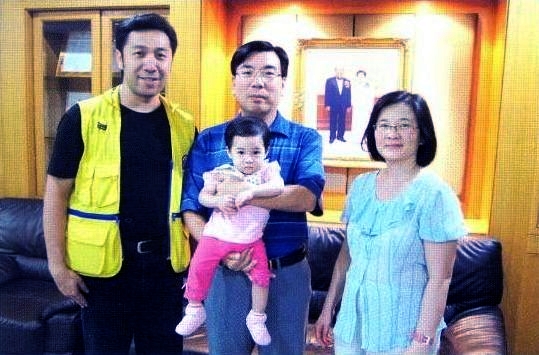
My husband and I participated in the August 1995 360,000 Blessing Ceremony in Korea. He is Thai and I am a Malaysian. We started family life in 1999. Although we had a local Chinese marriage ceremony in 2000, I could not settle in Thailand after starting our family life because of the commitment to my mission in Malaysia. Two years later, I moved to Bangkok to reside and settle there. Seven years had passed since our blessing. I was thirty-three years old then. We tried to conceive from that point on, but somehow were not successful. My physical condition was poor, it seems. I used to have cold hands and feet. That was an implication that I have an unhealthy womb. Despite many attempts to conceive, we failed. I visited many hospital doctors, Chinese-medicine doctors and spiritualist and took many medications. We also visited doctors in one of the famous local hospitals that advised to try intrauterine insemination (IUI) and ovulation induction. This is a kind of manual insemination, commonly known as artificial insemination (AI). I had been faithfully visiting the hospital and repeated this exercise for two years. Consistently, the outcome was negative.
I had experienced blighted ovum twice, which means conception occurred and a fertilized egg implanted in the womb, but a baby did not develop. On the ultrasound scan, only an empty sac showed. This eventually led to a miscarriage. Blighted ovum occurring twice to the same woman is rare. The doctor advised my husband and Ito go for genetic testing, which involved checking chromosomes for abnormalities.
Nothing we tried worked before Dr. Yong prayed over my husband and me. He was very concerned for us, because we could not have any children after so many years. He prayed for us in August 2008 and again in February 2010. I conceived my first daughter, Mika, in March after the successful completion of the first Asian Original Divine Principle Workshop, held in Bangkok.
When my pregnancy reached the fourth month, the doctor suggested I do an amniotic fluid test. This is a common prenatal test used to diagnose birth defects and genetic conditions. It is required when a woman is in the high-risk pregnancy category as I was, being a pregnant woman beyond thirty-five years of age. I refused to have the test done if it involved even a 1 percent risk that the baby might be aborted through the test. Conceiving required a painful effort. We were willing to accept whatever outcome occurred. Even if the test showed the baby had defects, how could we abort this child?
I gave birth to a baby girl on November 26, 2010. Her name is Mika, combing the sound "mi" as in "miracle" and "ka," which resembles the sound of "girl." Later, Dr. Yong suggested that my husband and I try for another baby. Ideally, this one should be a boy. Although my heart wanted to have one more child, I was quite hesitant. I wondered how this miracle could happen again. It would be another great challenge for me as I was forty-two years old when I gave birth to my first child.
When Mika was about and six months old, in March, Dr. Yong asked me to go to the Philippines to support the historic Mindanao Blessing Ceremony and I LC event, the first Interfaith Peace Blessing Festival in Asia. Dr. Yong mobilized all members in Asia to support this significant event and gave special directions to those who could not have children to participate. He said he would give a benediction prayer for couples who could not have children after the Blessing Ceremony. Many blessed wives and some husbands joined that mobilization. I joined as a staff member of the International Leadership Conference, because that was part of my mission. When all the events were over, Dr. Yong prayed for all those who could not have children on March 31, 2012. Based on that first event, seven other Blessing Festivals occurred throughout the Philippines. From there, they spread to other Asian nations.
Three months after the Mindanao Blessing, I conceived. I gave birth to my second child, a boy, on April 7, 2013. I was forty-five then. Another miracle! Dr. Yong gave him a wonderful name, Hyo-joon. We are indeed grateful.
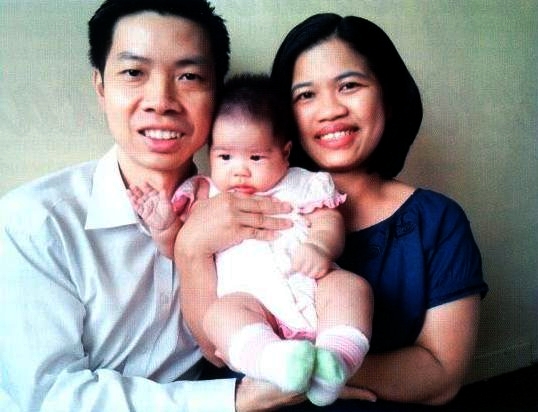
My name is Waraporn Niyomsat. I am a Thai sister married to a Malaysian brother, Mr. Hon-Lim Wong. We started family in 2006. I was then thirty years old. My husband was thirty- one. I first became pregnant in 2007, but had a miscarriage in the third month. I was deeply depressed. Subsequently, I strongly hoped to become pregnant again in order to fulfill the three great blessings and the four realms of heart.
At Chung Pyung, I joined a forty-day workshop to liberate my ancestors in February 2008 and a three-day special workshop in August of the same year. Before attending the Azalea Festival in May 2011, I offered prayers to God asking what I should do to have a baby. After I finished my prayer, I heard a voice: You should liberate your husband's ancestors.
One reason I participated in the festival was my hope to offer my desire and prayer in Dae Mo Nim's prayer room. In Chung Pyung, I liberated some of my husband's ancestors and wrote three golden wish papers. I was able to pray in Dae Mo Nin's prayer room for five minutes. While praying, I saw True Parents in holy robes surrounded by shining bright golden light as they put forth their hands to bless me. The prayer ended with me feeling as if God had answered my prayer and blessed my request.
Back in Malaysia after the Azalea Festival, I dreamed of a three-year-old girl beside me in a room. The following day, I had the same dream but the little girl disappeared, and as I opened a cabinet, a foreign child appeared to me. I woke up feeling as if God had told me to go witnessing and could thereby be able to bear a child.
One day in August 2011, I had an unexpected opportunity to witness to a high school friend through Facebook. She added me to a conversation and I discovered she was still single, so I decided to witness to her. For three months, I immersed myself in witnessing to her, while I was in my hometown, Ratchaburi, Thailand, visiting my family, but to no avail.
In February 2012, wonderful news came from Rev. Sam (Koay Seng Yeoh), the national leader of Malaysia, that Dr. Chung Shik Yong, our regional president, would pray for blessed couples that were childless, but with the condition that we agree to be mobilized for witnessing activities in Mindanao, Philippines, for twenty-one days and bring twenty-one days spiritual children to the Blessing Ceremony.
I was deep into thinking whether I should go because I had inadequate finances. On the other hand, I had heard that Sister Amy became pregnant after Dr. Yong prayed for her. I was motivated to go, but I was not able to pay for a trip to the Philippines. I prayed to God that I could go to the Philippines.
With the help of the national leader, my trip to Philippine was possible through money borrowed from members. I arrived at Davao in March 2012. I was assigned to Nabunturan Province. My team comprised six sisters -- the leader from the Philippines, two from Thailand, one from Cambodia, one from Taiwan and I. Some foundation existed in Nabunturan Province already. A town leader, a blessed member, brought us around to meet families for witnessing.
One night, I had three separate dreams. First, a big storm came with wind gusting harshly and some portion of the ground was flooded with water. Second. I was carrying a baby girl. In the dream, True Father was smiling at me, and I felt a sense of peace in the dream. I woke up right after that. The dreams were so real, as though it would happen.
The next day, we went to a village located on a hill where gold mining is done. We were going to meet a family. All the way up, the hill was treeless. When we were about to go back, it started to rain. Soon the road flooded and became muddy. Rainwater from the hill quickly flowed down the road; it became an instant stream, and we could see no trace of the road. For me it was terrifying experience. Had we left later, we would have had to stay overnight at our guest's house.
The day after that incident, we visited another village to present a Divine Principle seminar. This time, we had to meet a family on a mountain. We arrived in the afternoon. By the time we finished, it was already evening. We could not have imagined how dangerous the road becomes when darkness falls. We had noticed in the daylight that no guardrails protected the vehicles. We were engulfed with fear while heading down the mountain, dreading that the car might fall off its track. When we finally arrived at the center, we were so glad and relieved.
On March 31, the Peace Blessing Ceremony took place. We managed to bring guests loaded in three buses. As for me, I only managed to bring two couples. This was my last day in the Philippines. I met my husband. With us were other couples at the Waterfront Hotel waiting in the meeting room where Dr. Yong was about to pray for childless couples. We organized ourselves into two groups, those in which the wife was under forty years old and those where she was forty or above.
Before Dr. Yong prayed, he conveyed to us the following four encouraging messages:
1. Couples are childless because of many complications in our ancestry. So, we should liberate our ancestors. 2. We should not think of our children as our own children; we should think of them as God's children.
3. We should offer US $600 for bus rental service.
4. Once the prayer is offered, something will happen.
After his prayer, he shook hands with everyone. He shook my hand and confidently said, "You surely will have a baby." Five months later, after coming back to Malaysia, I was truly pregnant. In May 2013, I gave birth to a healthy baby girl. She is now four months old, her presence in our lives fulfills us.
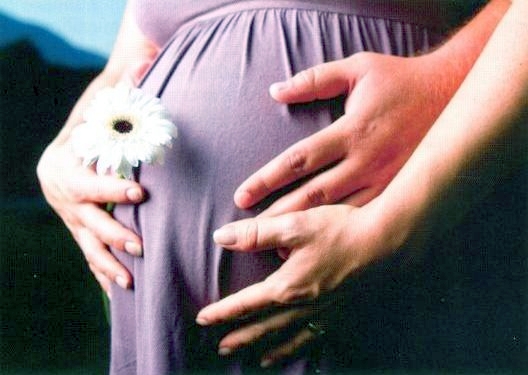
Statistical studies of human behavior can sometimes reveal completely unexpected information. A study released in 1986 on the marriage prospects of aging college- educated women stunned the American people. The study used 1982 data of 70,000 households and other studies conducted by the U. S. government. Two sociologists and all economists conducted the study, which found that white college-educated American women that were unmarried at age twenty-five had only a 50 percent chance of ever marrying in their lives.' If women within this group had not married by age thirty, their chances of marrying fell to 20 percent; by age 35 the likelihood that they would ever have a husband declined to 5 percent and by age forty, it declined further to about percent.
The statistics covered all American women, many of whom were emotionally crushed by the news. Press coverage focused on businesswomen whose dreams included connubial love, babies and grandchildren in the years after they had established themselves in a career.
They had not rejected the idea of marriage; they had just postponed their pursuit of marriage. They would achieve that goal in the same way they had achieved a prestigious education and a high-powered job -- or so they thought. While marrying was not at the forefront of these women's consciousness, the world was changing in ways that gradually made less likely the possibility that their postponed dream would ever come true. Among college-educated women born in the mid-1930s (their mothers' generation) 91 percent married. Statistically, only 78 percent of similarly educated women born in the mid-1950s (those about 30 years old when the study came out) would ever many. One of the researchers explained that this is in part because social mores had changed: More couples were living together and having children without marrying and beginning with the advent of birth control pills in the early 1960s fewer "shotgun weddings occurred."
Shock of a similar magnitude greeted the 2002 release of the book Creating a Life: Professional Women and the Quest Children, by Sylvia Ann Hewlett, an economist and a woman who had three children. and then went through fertility treatment to have a fourth baby when she was fifty-one years old. The book received massive media coverage in nations where it was marketed. In the U. S., it was featured on the talk show "Oprah," had a segment on the news highlight show "60 Minutes" and was on the cover of New York magazine under the headline, "Baby Panic." It also made the cover of Time magazine (see the cover on page 38) which stressed, "the Harsh Facts About Fertility."
The author wrote that the book's focus was "how we can create the conditions that allow more women to choose both career and family." However, the magazines, newspapers, radio and television outlets that covered the book focused mainly on isolated facts extracted from studies that Ms. Hewlett had done for Creating a Life. For example, Ms. Hewlett had surveyed women working in large companies' and found that 42 percent of those over forty years old in those companies were childless. Within that group, for women that earn $100,000 or more per year, the percentage without children was forty-nine. Many reviews of the book contained mocking references to the large percentage of women who believed they could postpone having their first child until their late thirties. However, the statistics that Hewlett presented in no way prove that these women were physically incapable of having children, only that they were unsuccessful at having a family.
Ms. Hewlett asserts that her book had a positive message; in fact, though it garnered wide and extensive media coverage, few people bought the book after reading the depressing figures cited in reviews. The publicity for the book worsened people's misperceptions about fertility and the age that women can naturally bear children and heightened an already existing sense of panic among newlyweds. Analyses of data show that already in the mid-1990s, couples worried excessively about having children. Before they had tried for an adequate number of months to have a baby naturally (for at least twelve menstrual cycles with conjugal relations once or twice during the fertile time) nervous couples were seeking costly, somewhat risky, infertility treatment.
Since 1859, the term "biological clock" has described timing mechanisms that scientists believe exist in living organisms to regulate cycles, such as the circadian rhythm that organisms (even human ones) experience as they go through cyclical fluctuations over each twenty-four hours. These cycles operate within the body but are effected by external factors such as sunlight during the day and its absence at night. Circadian cycles underlie our day-to-day existence throughout our lives.
Only in the early -1990s did "biological clock" begin commonly to refer to women having a limited number of years in which they are able to have children. That a large number of women in developed countries chose to delay having children until after they had established a career is a relatively new phenomenon. The ominous expression "her biological clock is ticking" articulates anxiety over a woman growing older, trying to have a baby but nearing the age at which she will be too old to have her first child.
Jean M. Avenge, a professor in the Department of Psychology at San Diego State University in California, has written nearly a hundred scientific papers and three books based on her own research. She and her first husband rarely lived together; their careers kept them in separate cities. At some point, it became clear that his determination for them to be together was weak. Because she wanted children, she divorced him. Following their divorce, she was a childless woman, thirty years old. The year was 2002. When she told her parents about the demise of the marriage, her mother asked if she had seen the latest issue of Time magazine, the issue with the baby on the cover and the review of Creating a Lite. When she finally read the article, it depressed her deeply.
A few years later, she married again. With her background, Mrs. Twenge knows that when statistics are presented to the public, they often look quite different from how they appear in the context of the studies they emerged from. She decided to read the studies underlying some of the statements she was reading about infertility. "I scoured medical-research databases," she wrote. She had often read in the mainstream media and on web sites that 30 percent of women aged thirty-five to thirty-nine would not become pregnant after a year of trying to have a baby. This widely cited statistic is based on information in an article that an academic journal ran in 2004. Finding the source of the information contained in that article -- birth records from France between 1670 and 1830 -- stunned her. That statistics used to plan having babies in the twenty- first century emerged from a time when health and environmental conditions were so radically different is astonishing. According to one study, life expectancy at birth in France rose from 27.9 years to 39.9 between 1750 and 1849. What sort of fertility could one expect under those circumstances?
Mrs. Twenge found one reason that researchers might have used historical data to predict fertility by age. They may have been attempting to eliminate the effect on the data of birth control pills, which in the U. S. was approved for use in 1960. Mrs. Twenge writes, "Surprisingly few well-designed studies of female age and natural fertility include women born in the twentieth century -- but those that do tend to paint a more optimistic picture." The studies she refers to in her article include one from 2004 of 770 European women, showing that 82 percent of women aged thirty-five to thirty-nine become pregnant within a year if the couple had sexual relations at least twice a week. The figure for women aged twenty-seven to thirty-four was 86 percent. About that study, she acids, "The fertility of women in their late twenties and early thirties was almost identical."
A study that tracked 2,820 women from Denmark that wanted to become pregnant found that 78 percent of those in the thirty-five to forty-year-old subgroup that were having conjugal relations during the woman's fertile time became pregnant within a year. For those in the twenty to thirty-four-year-old subgroup, the result was 84 percent under the same conditions.
A great deal of encouraging news is emerging about female fertility even as a woman nears forty years old. Mrs. Twenge reminds readers that in the study of 770 women, "the difference in pregnancy rates at age twenty-eight versus thirty- seven is only about 4 percentage points."